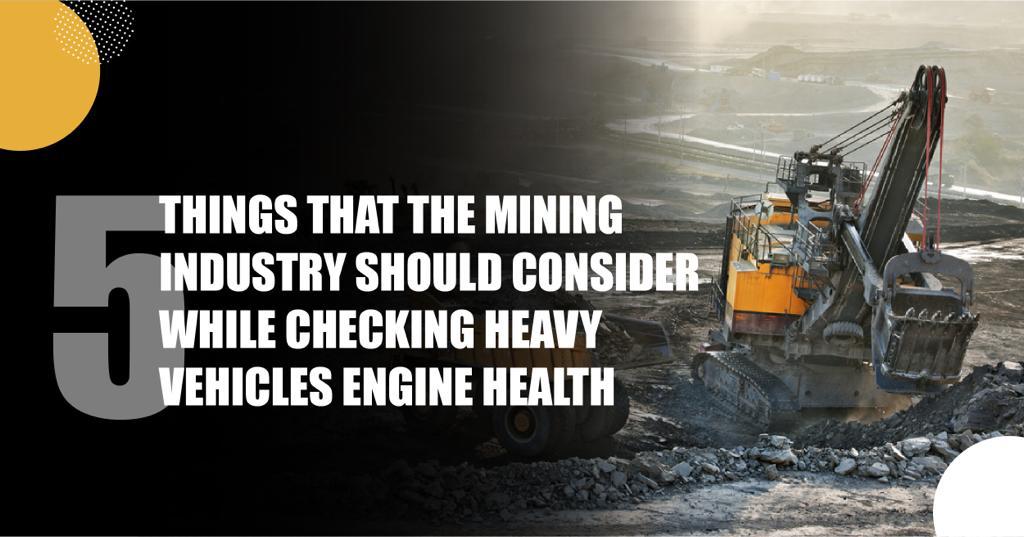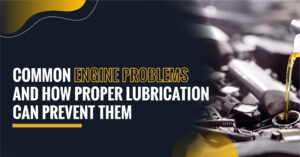The mining industry relies heavily on haul trucks and other mobile equipment to transport ore and overburden. These vehicles operate in harsh and demanding conditions, which can affect their performance and safety. Therefore, it is essential to monitor and maintain the engine health, use the right kind of mining oil for these vehicles to ensure optimal efficiency, reliability and productivity.
Here are five things that the mining industry should consider while checking heavy vehicle engine health:
1. Use Industrial lubricants designed for mining applications
Industrial lubricants are vital for reducing friction, wear and tear, and corrosion in engine components. They also help to dissipate heat, prevent contamination, and extend the service life of the engine. However, not all lubricants are suitable for mining applications, as they may not withstand the high temperatures, pressures, loads, and dust levels encountered by haul trucks and other heavy vehicles.
Therefore, the mining industry should use mining oil that are specially formulated for mining applications. These lubricants should have high viscosity index, thermal stability, oxidation resistance, anti-wear properties, and compatibility with seals and gaskets. They should also meet the specifications and requirements of the engine manufacturers and comply with the environmental regulations.
2. Implement regular engine inspections and preventative maintenance
Regular engine inspections and preventative maintenance are crucial for detecting and preventing potential problems before they escalate into costly breakdowns or accidents. Engine inspections should include checking the oil level, quality, and pressure; the coolant level, quality, and temperature; the fuel system; the air intake and exhaust system; the belts, hoses, and filters; the electrical system; and the emission control system.
Preventative maintenance should include changing the oil and filter; flushing and refilling the coolant; replacing worn or damaged parts; cleaning or replacing the air filter; adjusting the valves; testing the battery; and calibrating the sensors. These tasks should be performed according to a schedule based on the engine hours, mileage, or condition.
3. Use technology to monitor engine performance and condition
Technology can help to monitor engine performance and condition in real time and provide valuable data for analysis and decision making. For example, some haul trucks are equipped with machine monitoring systems that collect and transmit information such as engine speed, torque, power, fuel consumption, temperature, pressure, vibration, emissions, and fault codes. These systems can alert the operators or maintenance personnel of any abnormal or critical situations and suggest corrective actions.
Another example is the use of collision avoidance and warning systems (CXS) that can detect and prevent potential collisions between haul trucks and other vehicles or objects. These systems can improve safety by reducing human error, blind spots, fatigue, distraction, or poor visibility.
4. Follow a systems approach to integrate administrative and technological interventions
A systems approach is a holistic way of considering all the factors that affect engine health and safety in a complex and dynamic environment. It involves identifying and characterizing the problems, needs, gaps, solutions, stakeholders, interactions, feedbacks, outcomes, and impacts of haul truck operations. It also involves designing, implementing, evaluating, and improving administrative and technological interventions in a coordinated and integrated manner.
For example, a systems approach may involve conducting a task analysis to understand the roles, responsibilities, skills, knowledge, attitudes, behaviors, tools, equipment, and procedures of haul truck operators; conducting a risk assessment to identify and prioritize the hazards and risks associated with haul truck operations; developing a training program to enhance the operators’ competence and awareness of engine health and safety issues; implementing a communication system to facilitate information sharing and feedback among operators, maintenance personnel, and managers; and measuringand monitoring the effectivenessand impact of these interventions on engine health and safety performance.
5. Collaborate with research institutions and industry partners
Collaboration with research institutions and industry partners can help to access the latest knowledge, expertise, resources, and innovations related to engine health and safety. Research institutions such as the National Institute for Occupational Safety and Health (NIOSH) can provide scientific evidence, guidance, tools, and best practices for addressing haul truck-related health and safety issues. Industry partners such as engine manufacturers, lubricant suppliers, technology developers, and mining associations can provide technical support, feedback, standards, and regulations for improving engine performance, reliability, and sustainability.
By considering these five things while checking heavy vehicle engine health, the mining industry can enhance its operational efficiency, productivity, and profitability, as well as protect its workers, equipment,and environment. LubePlus Energies is a leading provider of industrial lubricants for the mining industry. We offer a wide range of high-quality lubricants that are designed to meet the specific needs and challenges of mining applications. Our lubricants can help to extend the engine life, reduce maintenance costs, improve fuel efficiency, and lower emissions. Whether you need engine oils, hydraulic fluids, gear oils, greases, or specialty products, we have the right solution for you. Contact us today to find out how we can help you optimize your heavy vehicle engine health with our industrial lubricants.






